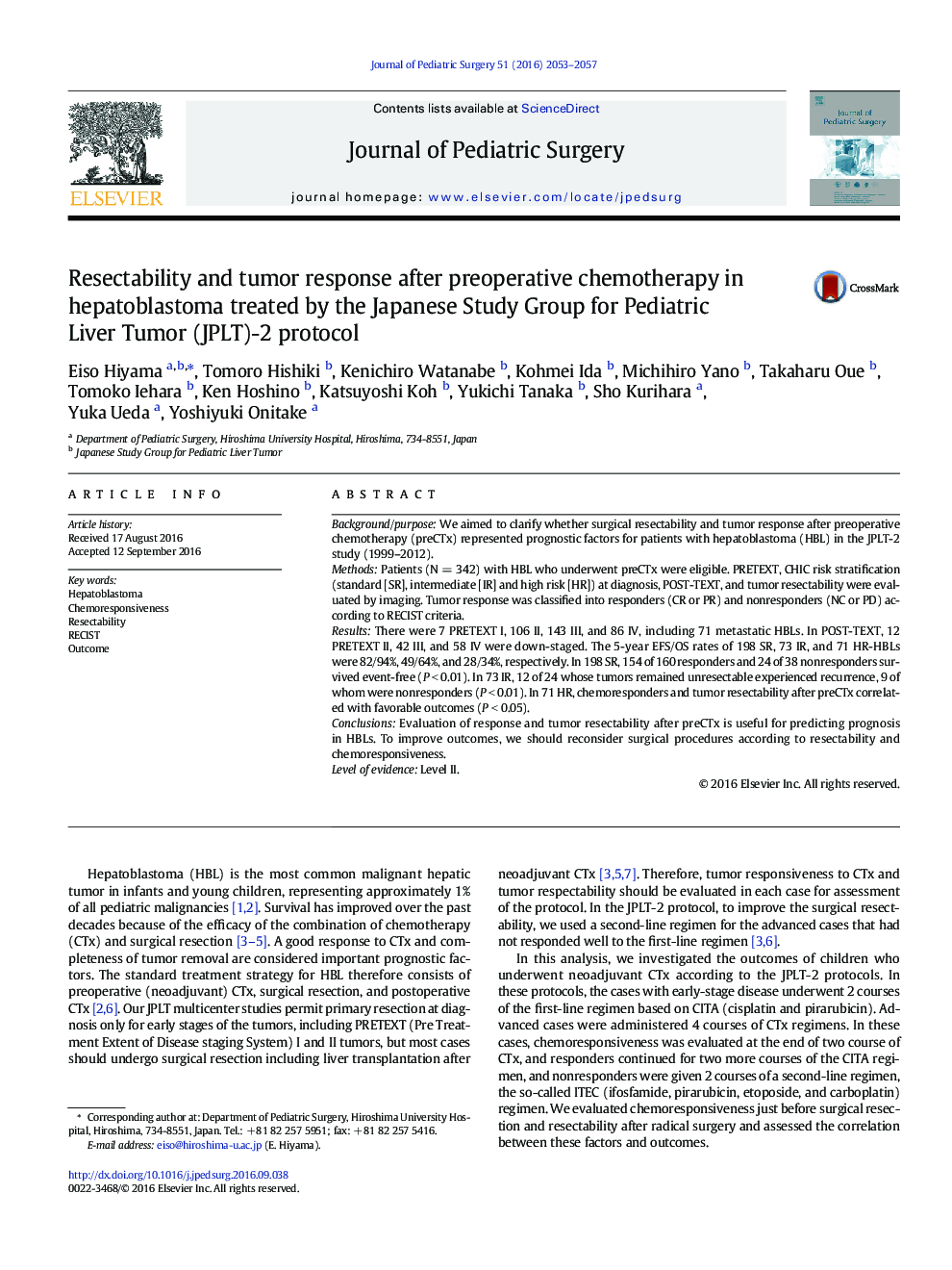| Article ID | Journal | Published Year | Pages | File Type |
|---|---|---|---|---|
| 5718340 | Journal of Pediatric Surgery | 2016 | 5 Pages |
Background/purposeWe aimed to clarify whether surgical resectability and tumor response after preoperative chemotherapy (preCTx) represented prognostic factors for patients with hepatoblastoma (HBL) in the JPLT-2 study (1999-2012).MethodsPatients (NÂ =Â 342) with HBL who underwent preCTx were eligible. PRETEXT, CHIC risk stratification (standard [SR], intermediate [IR] and high risk [HR]) at diagnosis, POST-TEXT, and tumor resectability were evaluated by imaging. Tumor response was classified into responders (CR or PR) and nonresponders (NC or PD) according to RECIST criteria.ResultsThere were 7 PRETEXT I, 106 II, 143 III, and 86 IV, including 71 metastatic HBLs. In POST-TEXT, 12 PRETEXT II, 42 III, and 58 IV were down-staged. The 5-year EFS/OS rates of 198 SR, 73 IR, and 71 HR-HBLs were 82/94%, 49/64%, and 28/34%, respectively. In 198 SR, 154 of 160 responders and 24 of 38 nonresponders survived event-free (PÂ <Â 0.01). In 73 IR, 12 of 24 whose tumors remained unresectable experienced recurrence, 9 of whom were nonresponders (PÂ <Â 0.01). In 71 HR, chemoresponders and tumor resectability after preCTx correlated with favorable outcomes (PÂ <Â 0.05).ConclusionsEvaluation of response and tumor resectability after preCTx is useful for predicting prognosis in HBLs. To improve outcomes, we should reconsider surgical procedures according to resectability and chemoresponsiveness.Level of evidenceLevel II.
